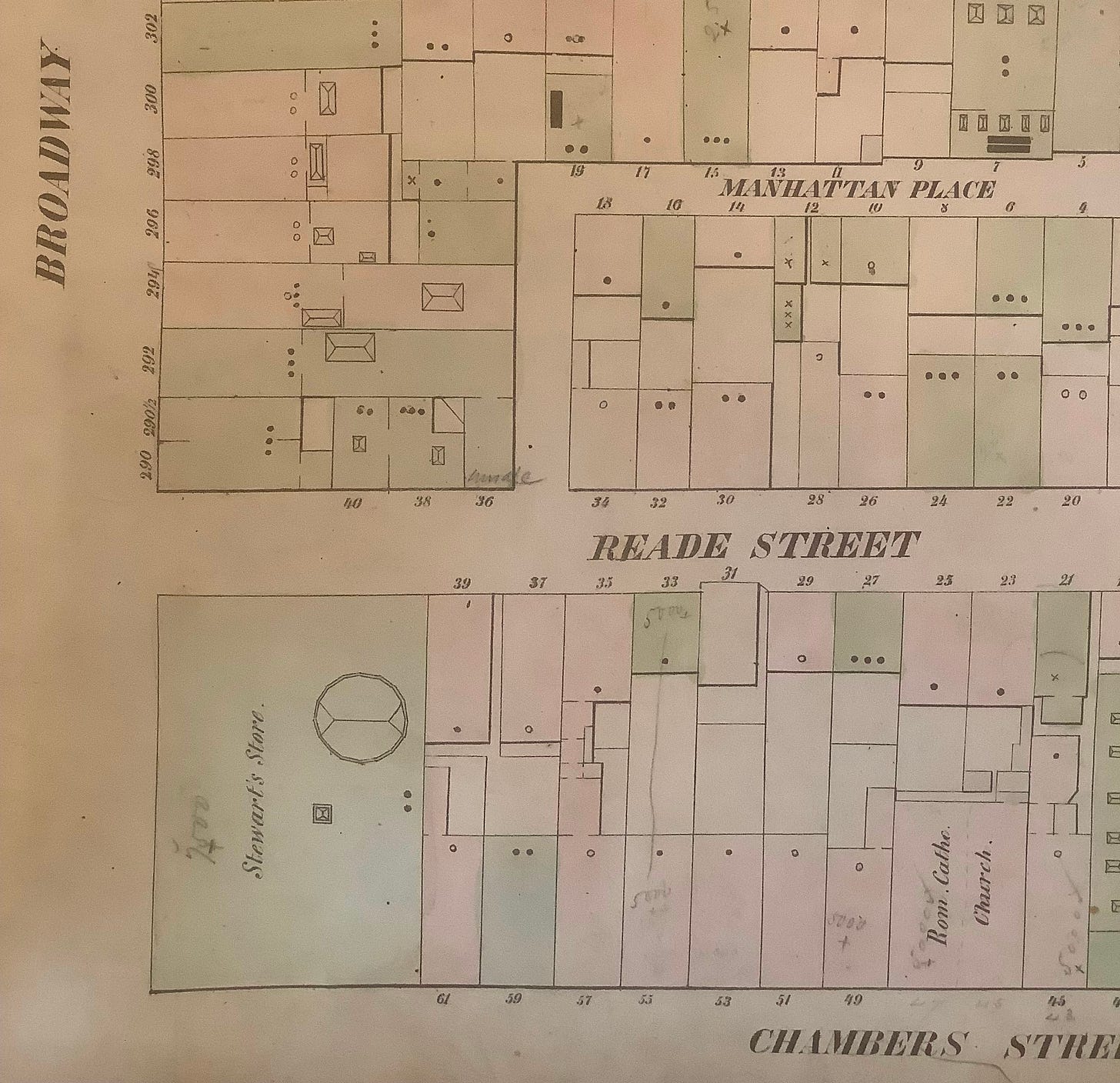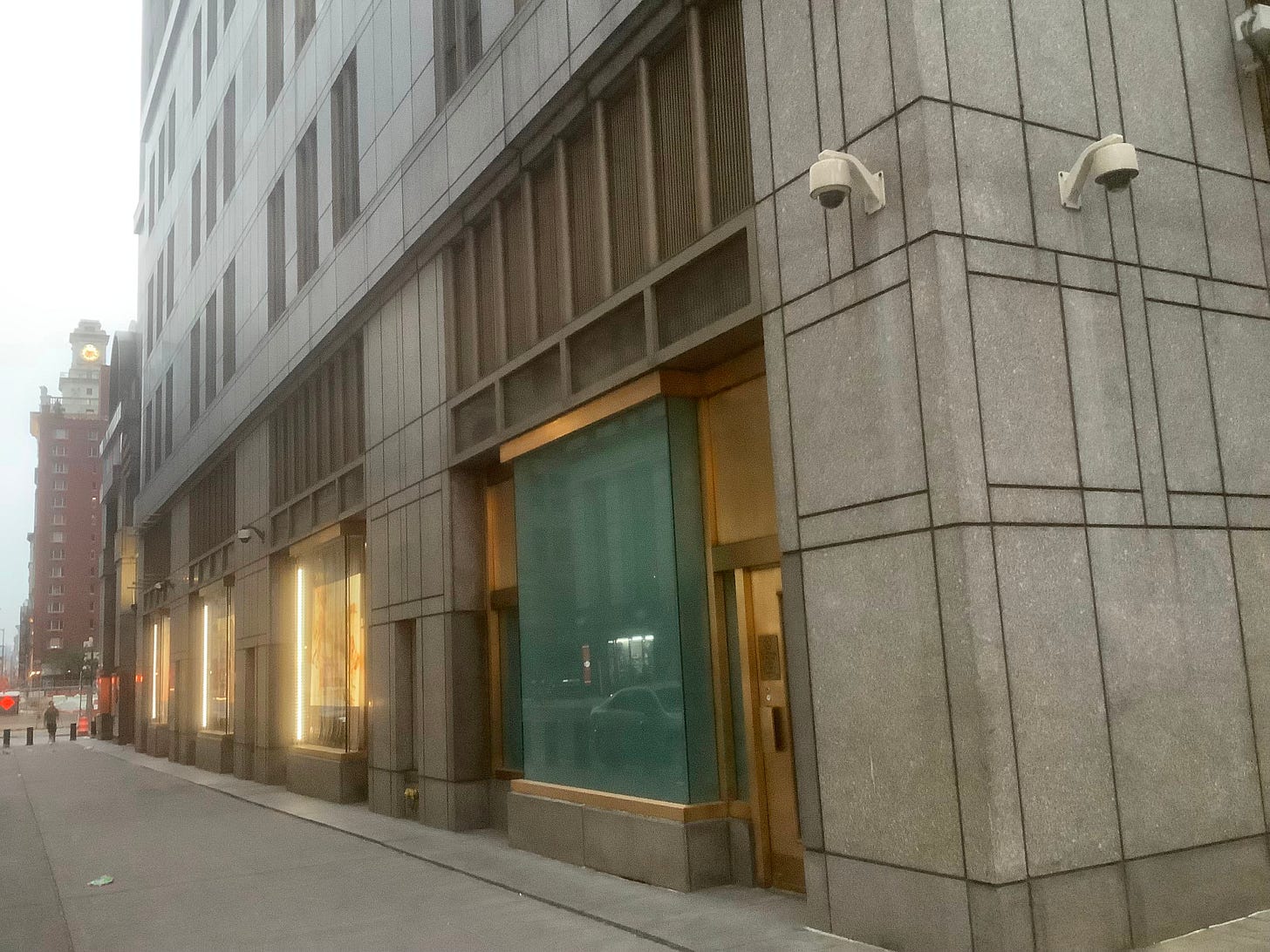Sites Associated with James McCune Smith and Family in New York City #9
Baillière’s

The second paragraph is based on one from a draft of my forthcoming biography of James McCune Smith.
Leaving the site of Lavinia and James McCune Smith’s 1820-1822 home at 44 Orange Street (now near where Baxter Street – formerly Orange Street – and Hogan Place now meet), I went down to Worth Street, turned right, then turned left a few blocks down on Broadway, headed for the northeast corner of Broadway and Reade Street. I was unable to find any images of this stretch of Broadway from the period, so we’ll have to settle for my photo of what stands there for now. A handsome grey granite structure – the Ted Weiss Federal Building – stands there now. It stretches all the way down the block, and part of it stands on the former site of the African Burial Ground, land set aside for the burial of free and enslaved black New Yorkers from the mid-1630’s to 1785. The site is now a National Monument. The entrance to the visitor centre is through a central door in the Ted Weiss Federal Building, and there’s an outside memorial around the way as well.

That’s where Baillière’s bookstore once stood, at 290 Broadway.[1] Baillière’s was a bookseller and publishing company founded by Jean-Baptiste Baillière as a small bookstore in Paris in 1818. Over the next few decades, the Baillière family opened branches in London, New York, Baltimore, and Melbourne, Australia. Baillière’s originally focused on medical books but over time, published and sold books in the sciences, literature, even the military arts. This location was run by Hippolyte Emile Baillière and his brother Charles, from at least 1851-1868.[2] It was evidently McCune Smith’s favorite bookstore for many years given how often he wrote about it, and he went there regularly. In his New York correspondent’s letter for Frederick Douglass’ Paper’s 17 November 1854 issue, he wrote how, as he browsed the shelves one day, he was ‘deliberately violating the last clause of the tenth commandment, in the matter of the collection of books before us.’ McCune Smith vividly described a typical scene at Baillière’s: in this ‘small, cramped up agency… You meet a peculiar sett [sic] there––men of few words, but earnest brows; mechanics with the grime half washed off; chemists with a nitrous odor about them; vampires redolent of the dissecting room; men whose bleared eyes tell of microscopical study; angular looking geologists; miners; star-gazers; hard visaged mathematicians, (how unlike gentle Charlie!) [McCune Smith’s friend and mathematician Professor Charles Reason] &c., &c.’[3] As I describe in the biography, McCune Smith would regularly discuss going to Baillière’s, and write about what he read in the many books he purchased there. After returning home from New York with five years of university education under his belt, McCune Smith had never stopped being an avid reader and scholar. Baillière’s helped him stay on top of the most cutting-edge ideas and innovations in the worlds of science, medicine, literature, and more.
[1] Henry Wilson and John F. Trow, Trow’s New-York City Directory. H. Wilson, Compiler. For 1853-1854 (John F. Trow, 1853), 41, New York City Public Library Digital Collections. (HathiTrust link)
[2] Catalogue General Des Livres d’Histoire Naturelle, Botanique, Medicine, Art Militaire, Litterature... A Paris, Chez J. B. Bailliere et Fils (Paris: J. B. Bailliere et Fils, 1854); Assignee’s Sale of Books. Catalogue... of the... Stock of Books of Bailliere Bros., Comprising... Scientific, Medical and Miscellaneous Works, Including ... French Books (New York: Bailliere Bros., 1870); Laurel Clark, F. F. Bailliere: Publisher in Ordinary, Publisher Extraordinary, Bibliographica Historica Australiae 14 (Canberra: Mulini Press, 2004), 5–6.
[3] James McCune Smith, ‘Heads of the Colored People - No. X: The Schoolmaster (Continued)’, Frederick Douglass’ Paper, 17 November 1854.

